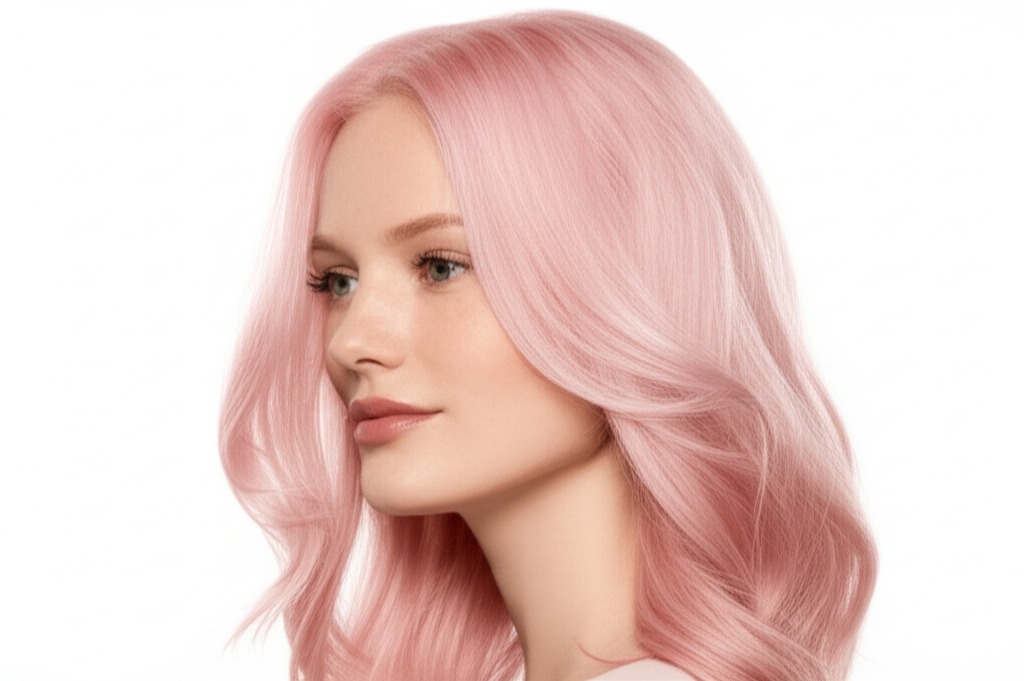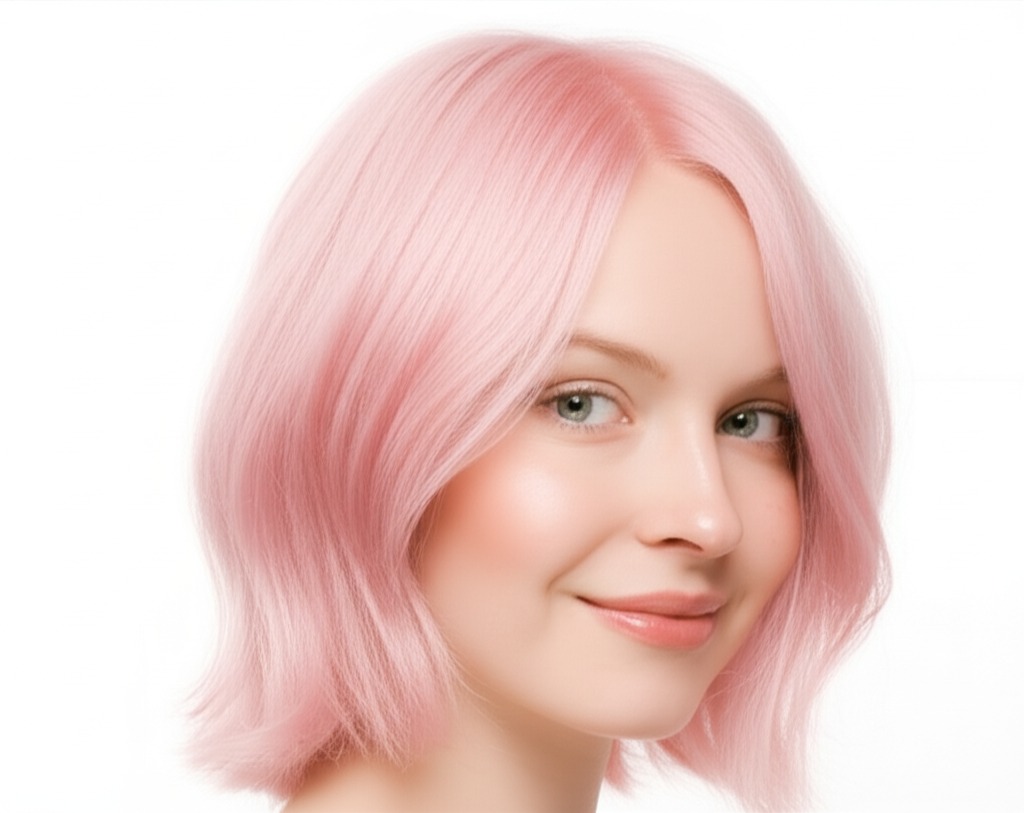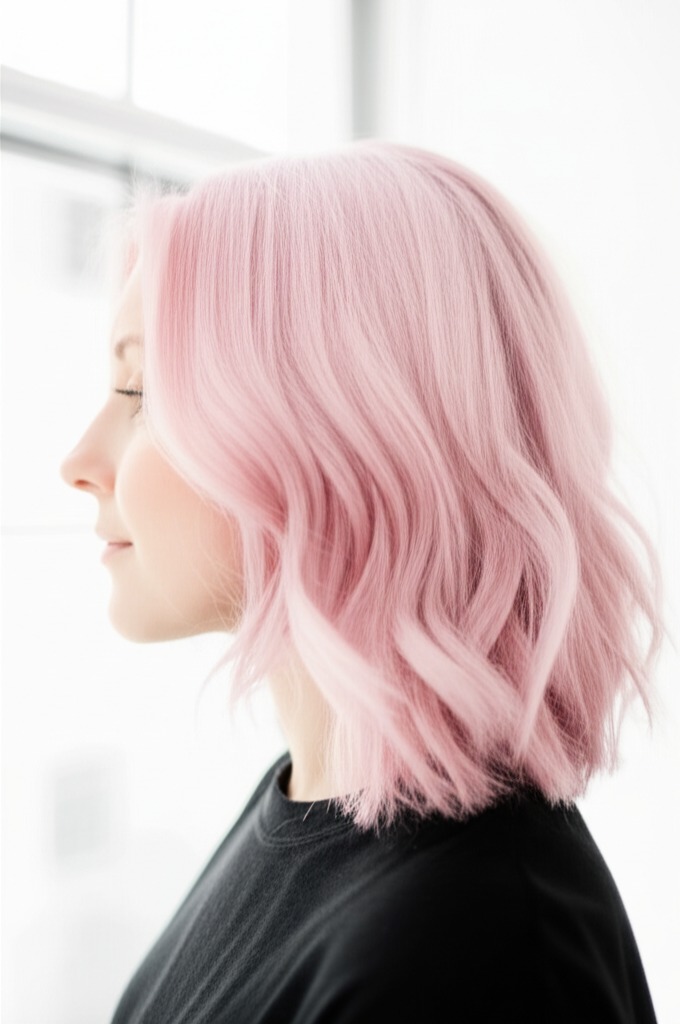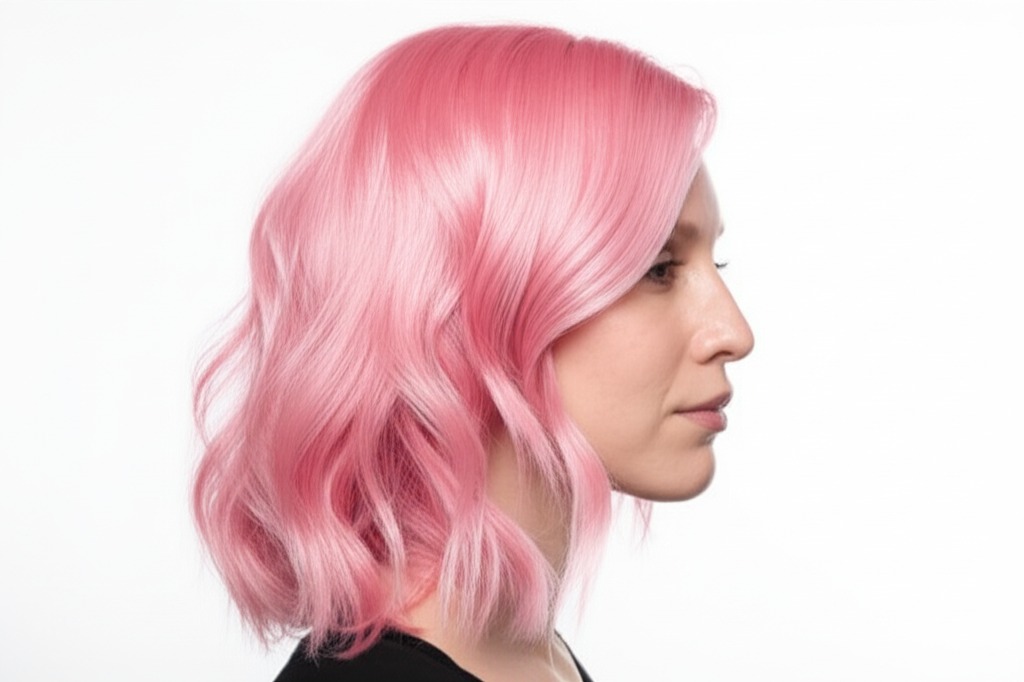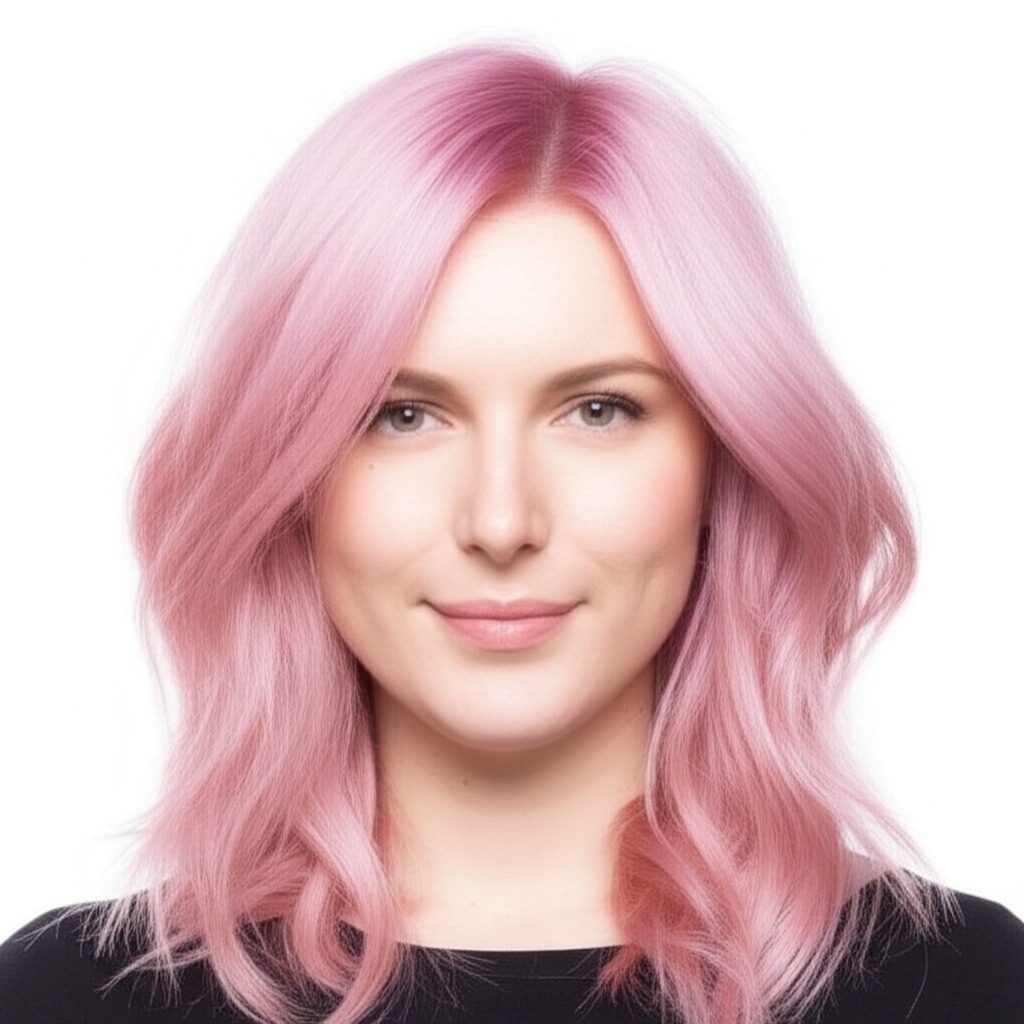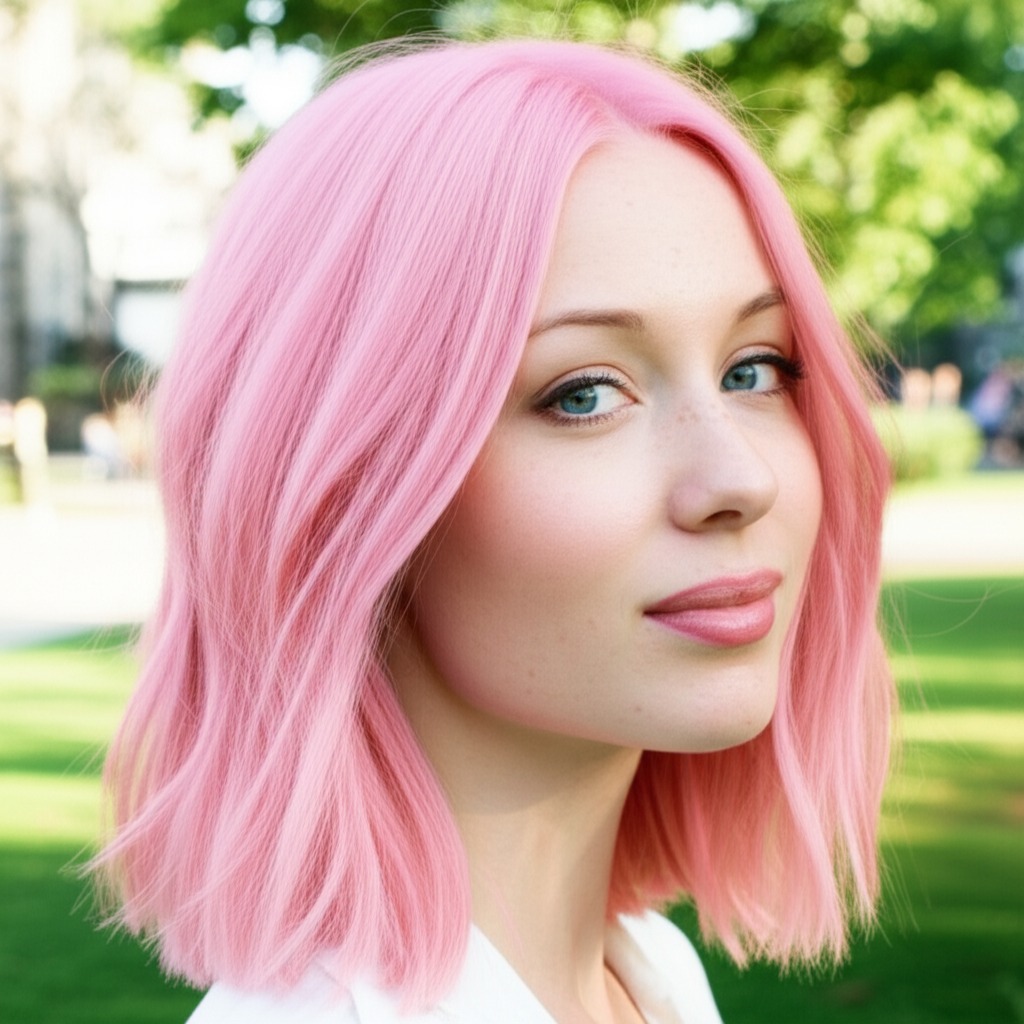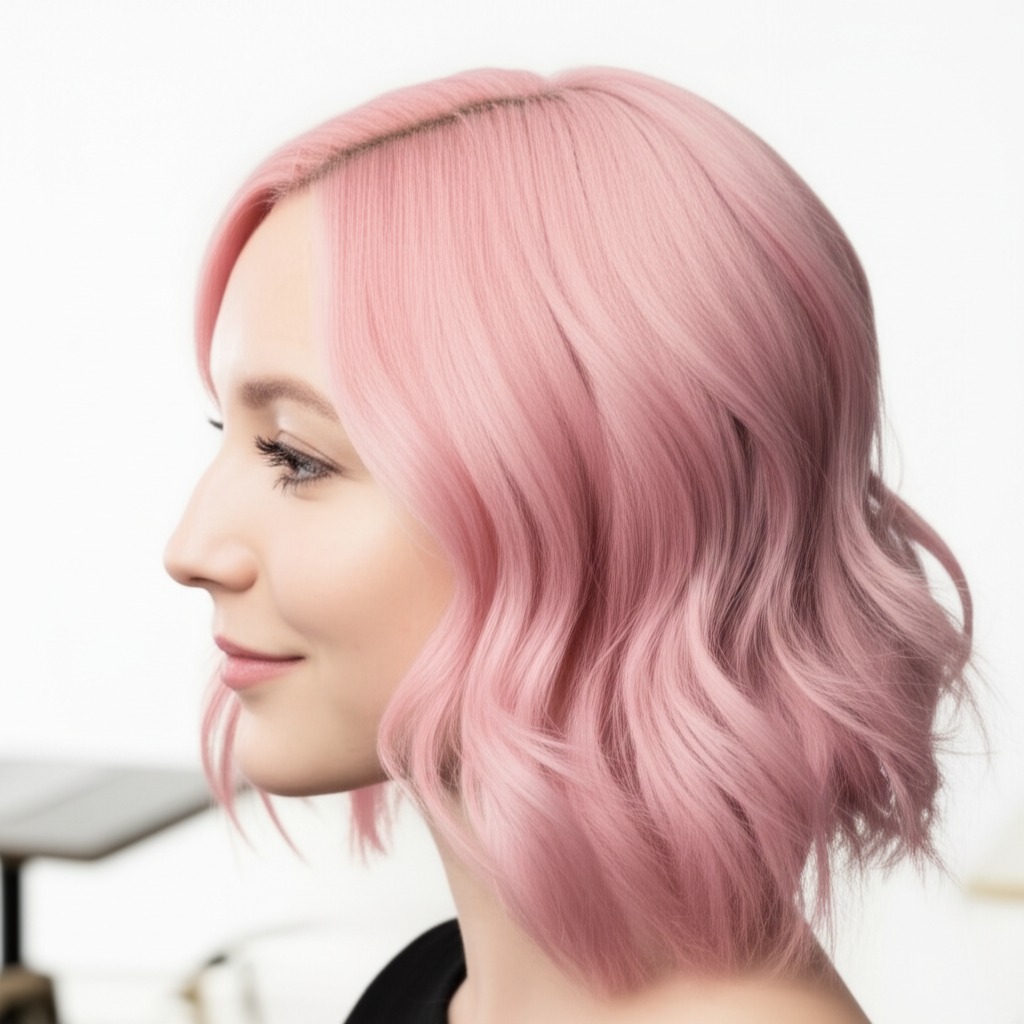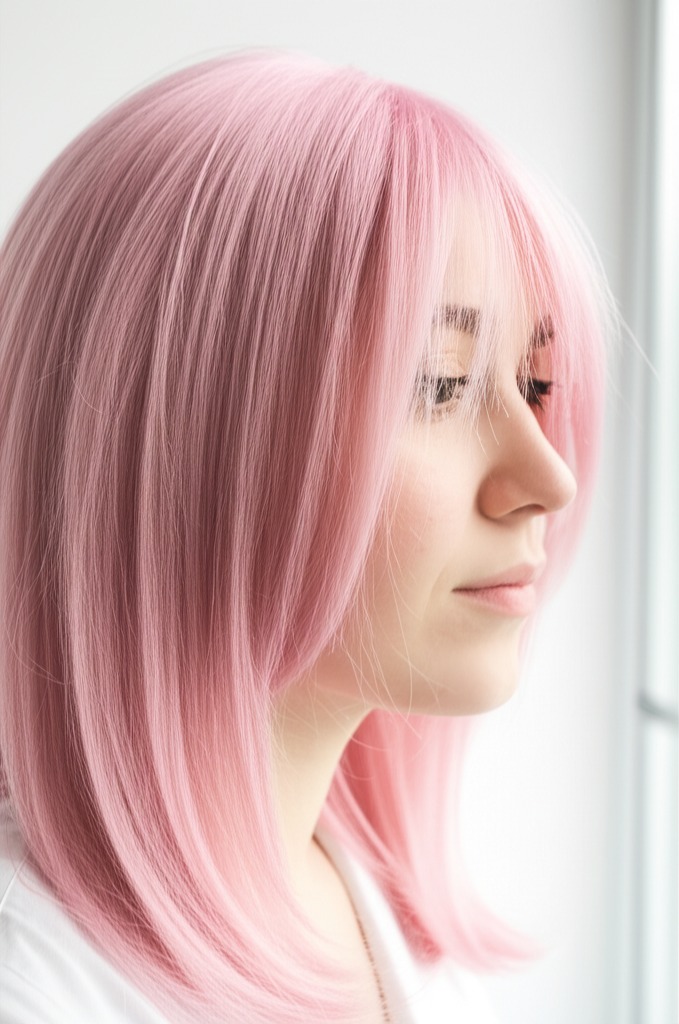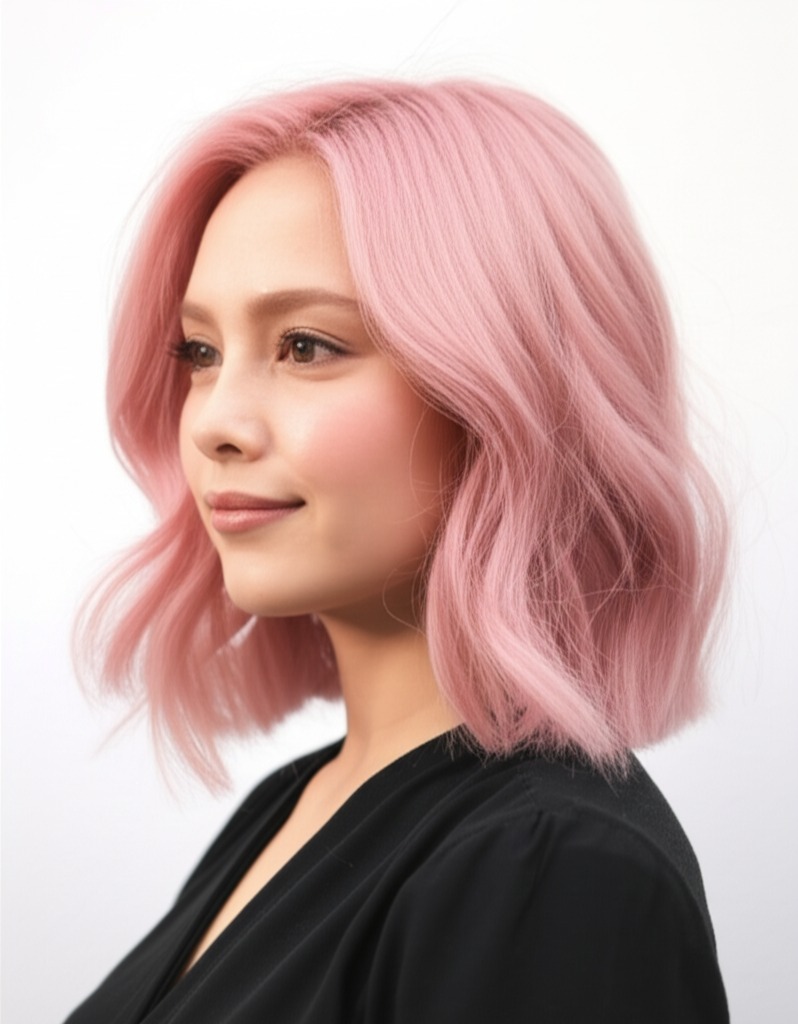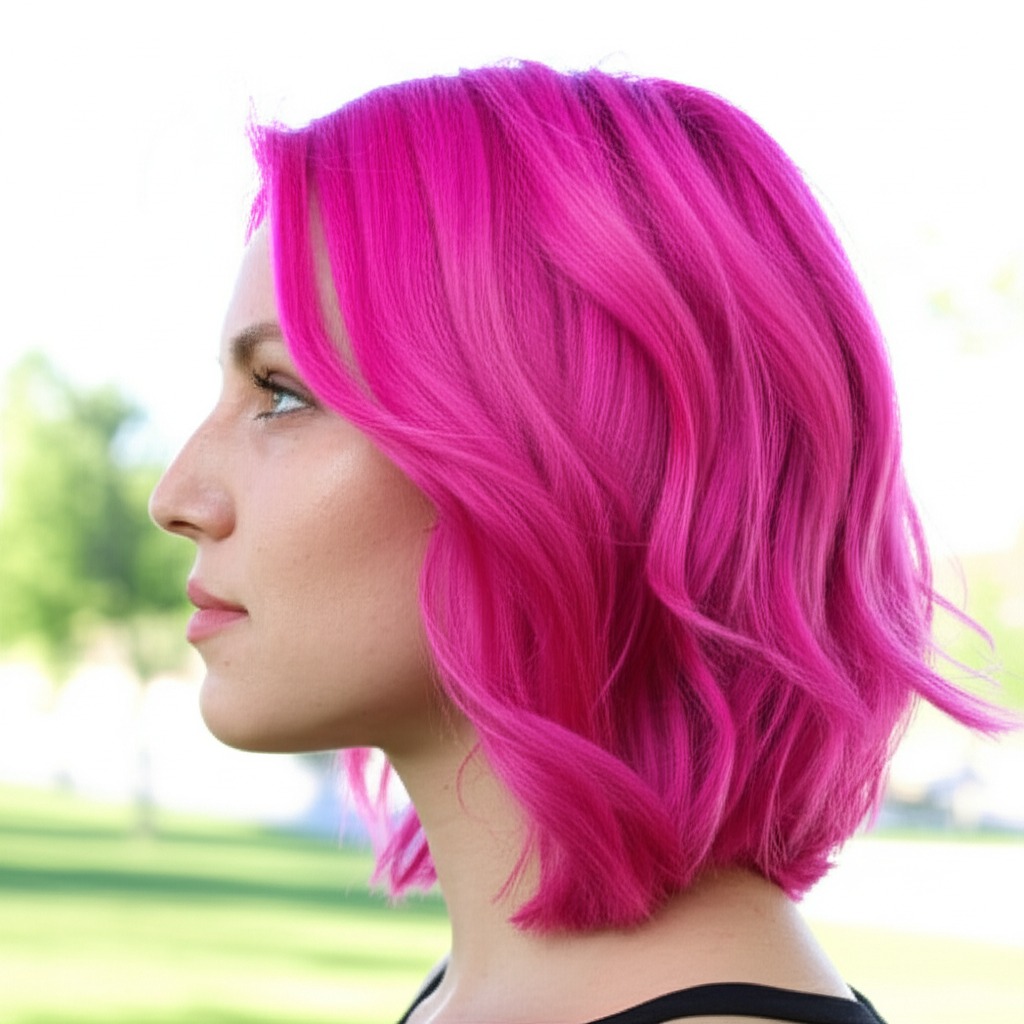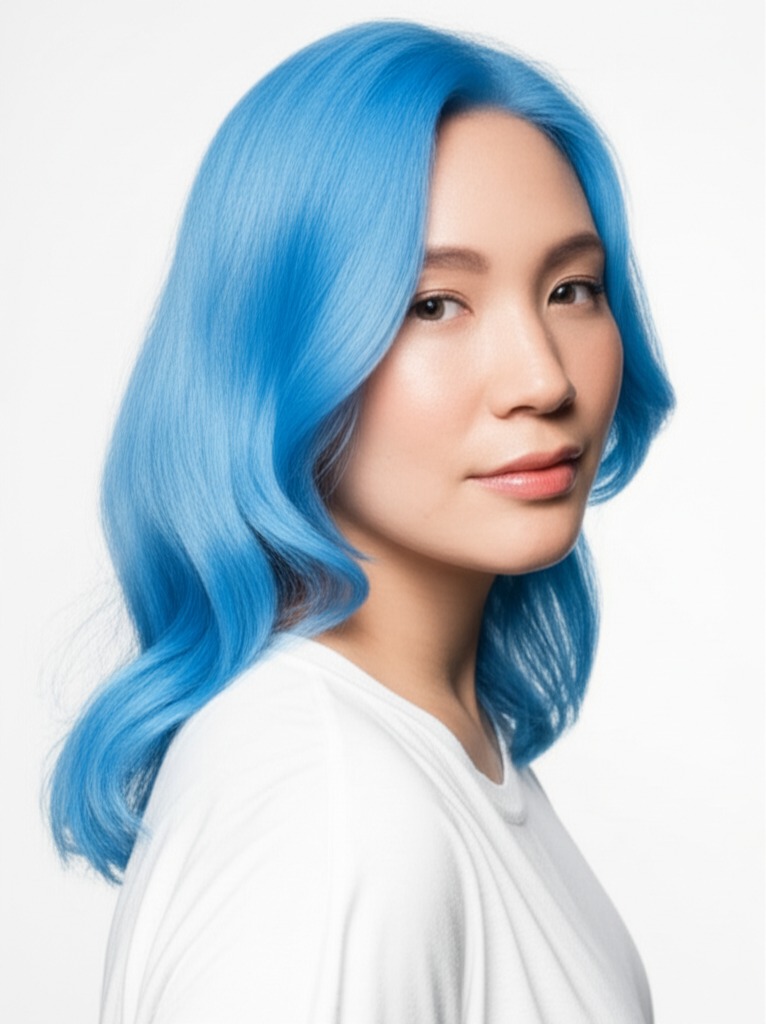#Dreamy Pastel Pink Hair: Your Complete Guide
Pastel pink hair is having a moment – and for good reason! It's playful, feminine, and can be surprisingly versatile. But achieving that perfect soft hue isn’t always as simple as grabbing the first bottle of pink dye you see. This guide will break down everything you need to know about pastel pink hair, from choosing the right shade to keeping it looking its best.
#1. Understanding Pastel Pink: Shade & Depth
Pastel pinks aren't just "pink." They have undertones and depth that dramatically affect how they look on you. Let’s break it down:
- Undertone: This is the subtle color within the pink.
- Cool-toned Pinks: These lean towards lavender or lilac, with a blueish tint. Think bubblegum pink but softer. They work well to brighten skin and add a touch of coolness.
- Neutral Pinks: A balanced mix – not too warm, not too cool. These are generally the most universally flattering.
- Warm-toned Pinks: These have peachy or coral notes. They can be gorgeous but require careful consideration (more on that later!).
- Depth/Levels: This refers to how light or dark the pink is. Levels range from 1 (very dark) to 10 (lightest). Pastel pinks typically sit between levels 7-10, depending on your starting point. The higher the level, the more pastel it will appear. A Level 7 might be a dusty rose, while a Level 9 is almost white with a hint of pink.
#2. Who Does Pastel Pink Flatter?
While anyone can rock pastel pink, certain features make it particularly stunning:
- Skin Tone & Undertone:
- Cool Skin Tones (pink/red undertones): Cool-toned pastels will enhance your complexion and create a harmonious look. Avoid overly warm pinks which can clash.
- Neutral Skin Tones: Lucky you! You can usually pull off most pastel pink variations. Experiment to see what you like best.
- Warm Skin Tones (yellow/golden undertones): Warm-toned pastels can work, but it’s tricky. They might bring out brassiness in your hair (more on that later). If you have warm skin, opt for a cooler pink or consult with a stylist to balance the tones.
- Eye Color: Pastel pink complements almost every eye color! Blue eyes pop beautifully against cool-toned pinks. Green eyes are gorgeous with neutral or slightly warmer pinks. Brown eyes look stunning with any shade of pastel pink.
- Natural Hair Level Starting Point: This is crucial. Pastel pink requires a very light base to show up properly.
- Levels 1-4 (Dark Brown/Medium Brown): Significant lightening will be needed, requiring multiple sessions and potentially more damage. Be prepared for a longer process!
- Levels 5-6 (Light Brown/Dark Blonde): Still requires lifting, but less drastic than starting darker.
- Levels 7-10 (Medium Blonde/Platinum Blonde): You’re already in the ballpark! A single application or toner might be all you need.
#3. Technique Options: From Subtle to Bold
The technique used will heavily influence the final look and complexity:
- Single Process: The simplest option, applying a pink dye evenly across pre-lightened hair. Best for those already close to a light blonde base (levels 8-10).
- Highlights/Lowlights: Adding pops of pastel pink through highlights or lowlights creates dimension and movement. Good for blending into darker bases.
- Babylights: Very fine, subtle highlights that mimic the look of sun-kissed hair. A soft approach to introducing pink.
- Gloss/Toner: This is often used after lightening to deposit the pastel pink color and refine the tone. It’s also a great way to refresh existing color.
- Balayage-Effect (Ombre): Creates a gradual transition from darker roots to pastel pink ends, offering a more lived-in look. Can be less harsh than a solid application.
- Solid Application: A uniform, all-over color – best suited for those who want a bold statement and have the right base level already achieved.
#4. Maintenance & Longevity: Planning Ahead
Pastel pink demands commitment! Here’s what to expect:
- Wash Frequency: Less is more! Aim for 2-3 washes per week using cool water.
- Toner Refresh: Pastel pink fades quickly. Expect to tone your hair every 2-4 weeks, depending on how fast it fades and your desired intensity. Gloss treatments can extend the time between toner applications.
- Root Growth Pacing: The contrast between your natural roots and pastel pink will be noticeable as they grow out. Plan for regular touch-ups or embrace a gradual transition.
- Budget/Time Planning: This is not a low-maintenance color! Be prepared to spend:
- Initial Color: $150 - $400+ (depending on salon, location and the amount of lightening required)
- Toner Refresh: $75 - $200 every 2-4 weeks.
- Time Commitment: 2-6 hours for the initial process; 1-3 hours for toner refreshes.
#5. Seasonality & Pairing with Cuts
Pastel pink is surprisingly versatile:
- Cuts That Shine:
- Bob/Lob: A classic, clean look that showcases the color beautifully.
- Long Layers: Creates movement and dimension, allowing the pink to catch the light.
- Pixie Cut: A bold choice for a playful, edgy vibe.
- Seasonal Tweaks: In winter, consider a slightly deeper, dustier rose pink. For summer, opt for a brighter, more vibrant pastel.
- Occasion Picks:
- Work: A muted, dusty rose is generally the most professional option.
- Daytime: A soft, playful pastel works perfectly.
- Evening: Embrace a bolder, brighter pink!
- Weddings: A romantic and whimsical choice – just ensure it aligns with the wedding's overall aesthetic.
#6. At-Home Care: Protecting Your Investment
Proper care is essential to keeping your pastel pink vibrant:
- Sulfate-Free Shampoo & Conditioner: Sulfates strip color, leading to faster fading.
- Clarifying Cadence: While sulfate-free products are key, occasional clarifying washes (once a month or less) remove buildup and keep the color bright. Follow with a deep conditioner.
- Heat Protection: Always use a heat protectant spray before using any hot styling tools.
- Color-Safe Styling Products: Opt for products specifically designed for colored hair.
- Product Checklist: Sulfate-free shampoo, conditioner, clarifying shampoo (occasional), deep conditioning mask, heat protectant spray, color-safe styling products.
#7. Common Pitfalls & How to Avoid Them
- Brassiness: Pink is prone to brassiness! Use a purple shampoo/conditioner regularly to neutralize yellow tones.
- Banding: Uneven lightening can create noticeable bands of color. Professional lightening techniques are crucial for even results.
- Patchiness: This happens when the base isn't evenly lightened, resulting in inconsistent pink patches. Thorough pre-lightening is essential.
#8. Pros & Cons: Weighing Your Options
Pros: Playful, feminine, versatile (can be adapted to different styles), relatively soft and gentle compared to darker colors. Cons: High maintenance, fades quickly, requires significant lightening for darker hair, potential brassiness issues.
#9. Salon Consultation Script: Setting Expectations
When consulting with your stylist, be prepared to discuss these points:
- "I want pastel pink hair." (Be specific about the shade you envision – bring pictures!)
- “What is my current level and how much lightening will be required?”
- "What technique would work best for my hair type and desired look?"
- "How long will the process take, and what’s the estimated cost?"
- “Can we discuss a realistic maintenance schedule, including toning frequency?”
- “What are the potential risks (brassiness, damage) and how can we minimize them?”
#10. FAQs About Pastel Pink Hair
- How long does pastel pink last? It typically fades within 4-8 washes, requiring regular toner refreshes.
- Can I achieve pastel pink on dark hair without significant damage? It’s challenging! Multiple sessions are usually needed, increasing the risk of damage.
- What's the difference between a gloss and a toner? Both deposit color, but toners primarily adjust tone while glosses add shine and condition.
- Will pastel pink work on my gray hair? It can, but requires careful lightening and blending to avoid a patchy look. Consult with your stylist.
- Can I do this at home? While possible, it’s risky without experience in lightening techniques. Professional results are highly recommended.
- How do I prevent my pastel pink from turning orange/brassy? Use purple shampoo and conditioner regularly!
Pastel pink hair is a fun and expressive choice – with the right preparation and care, you can rock this dreamy hue with confidence!
